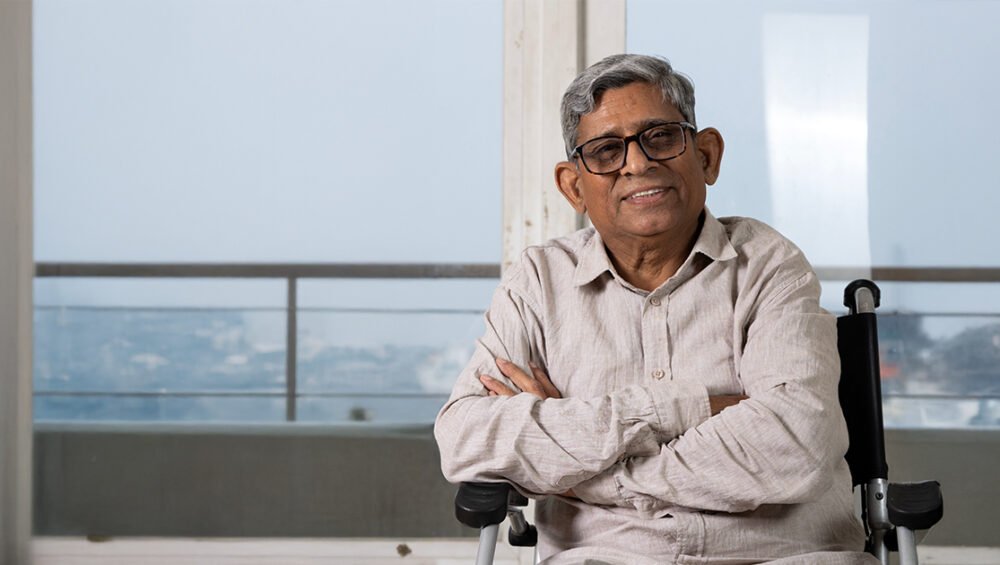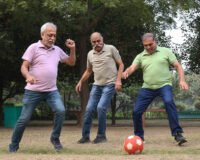Choosing where to live next is a big decision. Health, safety, and everyday joy matter as much as decor. If you’re touring options and shortlisting the best old age homes in India, this simple, action-ready checklist will help you focus on what truly supports an active life. It also works perfectly when you are comparing good old age homes in Delhi NCR, where choices are many and details make the difference.
How to use this checklist
Print it or keep it on your phone. As you tour, tick off each item, take photos, and make quick notes. Small details you notice today become big comforts tomorrow.
- Spaces that help you move (1–5)
1) Walking loops and gardens
Are there shaded paths, benches at intervals, and non-slip paving? A daily 15–20 minute walk should feel safe and pleasant.
2) Fitness zones placed close to rooms
Check the distance from apartments to the gym, yoga room, and indoor games area. The shorter the walk, the more often you’ll go.
3) Senior-friendly gym gear
Look for low step-up heights, recumbent bikes, light dumbbells, resistance bands, and clear instructions. Ask for a quick demo.
4) Yoga and aerobics studio
Is there space for chair-based formats, mirrors for alignment, and good ventilation? See if classes run at different intensities.
5) Indoor games corner
Table tennis, carrom, darts, and chess encourage gentle activity and social play. Are tables stable and well-lit?
- Design for safety and confidence (6–10)
6) Anti-skid floors and grab rails
Walk the corridors and bathrooms. Check rail sturdiness, floor grip when slightly wet, and thresholds that won’t catch toes.
7) Lighting and night routes
How bright are hallways after dusk? Are motion-sensor night lights or low-glare options available for midnight trips?
8) Lifts and seating breaks
Are lifts spacious and quick? Do long corridors have chairs every 20–30 meters for rest stops?
9) Emergency call systems
Try the call button in rooms and bathrooms. Ask about average response time, especially at night.
10) Clear, visible signage
Large fonts and high-contrast signs help everyone. Wayfinding reduces stress and keeps you moving independently.
- Programs that build strength, balance, and stamina (11–15)
11) Weekly class calendar
Check if yoga, balance training, strength circuits, and walking clubs actually run—a calendar on the wall should match real-time sessions.
12) Physiotherapy access
Is there an on-site physio or a visiting partner? Ask about post-surgery support, fall-prevention plans, and personalized exercises.
13) Progress tracking
Do instructors help you set simple goals (e.g., chair-to-stand count, step targets) and review them monthly?
14) Low-impact sports
Are there badminton times, putting greens, or gentle aerobics for cardio without joint strain?
15) All-weather plan
On poor air days or during extreme heat/cold, is there a clear indoor exercise routine to keep you consistent?
- Food that fuels activity (16–18)
16) Balanced, flexible menus
Ask how protein, fiber, and hydration are built into meals. Can the kitchen tailor plates for diabetes, low-salt, or high-protein needs?
17) Meal timing that matches routines
Are breakfast, lunch, and dinner at senior-friendly hours? Is there a light evening snack option after activities?
18) Hydration cues
Look for water stations, herbal tea options, and gentle reminders during classes or events. Hydration supports joints, mood, and stamina.
- Culture and care that keeps you consistent (19–20)
19) Staff-to-resident rapport
Watch how staff greet residents. Do they know names, preferences, and mobility levels? Warm, attentive teams keep you active safely.
20) Community rhythm
Peek at recent event photos and talk to residents. Are there festivals, music hours, and hobby clubs? A lively yet calm rhythm makes it easy to show up, move, and smile.
What to ask on every tour
- “Can I sit in on a class today?” (Nothing beats seeing the session in action.)
- “May I taste a meal?” (Check flavor, softness for chewing, and portion balance.)
- “What happens during a night-time emergency?” (Clear steps = real peace of mind.)
- “How do you personalize plans?” (From exercises to meals to daily routines.)
- “Can I try a short stay?” (A 3–7 day trial reveals more than any brochure.)
For families comparing good old age homes in Delhi NCR
Delhi NCR offers both central addresses and greener outskirts. In the city core, you may gain quick access to hospitals and culture. On the edges, you often get bigger gardens, longer walking loops, and quieter nights. Tour at different times of day—mid-morning for activity energy, evening for lighting checks, and a weekend for community feel. Ask how the home handles poor AQI days, seasonal heat, and winter fog. The best homes adapt the program, not your progress.
Why health-first design matters
A health-first community removes tiny frictions. When corridors are bright, you walk more. When the gym is nearby, you visit twice a week. When menus hit protein targets, muscles rebuild. When classes are friendly, you try new things. Over months, these small wins add up to stronger legs, steadier balance, and clearer mood. That’s what you really pay for when you choose among the best old age homes in India—design that makes the healthy choice the easy choice.
Saral Satya Legacy (SSL): A Note for Your Shortlist
If you’re touring good old age homes in Delhi NCR, add Saral Satya Legacy (SSL) to the list. Located in Greater Noida, SSL blends age-friendly apartments with structured wellness, yoga, and physiotherapy access. There are indoor games, cultural evenings, and chef-led menus that can be tailored for diabetes, low-salt, or higher-protein needs. Safety features such as grab rails, non-slip floors, and quick-response call systems are standard. Most important, SSL encourages trial stays—so you can experience the classes, meals, and community rhythm before you choose. That’s how independence meets support in real life.
Conclusion
Tours can feel overwhelming. Use this 20-point checklist to focus on what matters: safe design, real programs, flexible food, and a caring culture. Visit at varied times, sit in on a class, and talk to residents. The right home will feel calm, active, and welcoming—three signs you’ll stay consistent with movement and enjoy your days.
Saral Satya Legacy brings these elements together in the NCR. With supportive spaces, balanced dining, engaging activities, and a responsive team, SSL helps you turn healthy intentions into daily habits. Put it on your tour map and see how a health-first community can make your next chapter strong and joyful.
FAQs
1) How do I know if a class is right for my fitness level?
Ask the instructor to show beginner options—chair versions, shorter sets, or slower pacing. Try one session; you should feel worked, not wiped out.
2) What should I bring on a tour to compare homes?
Carry this checklist, a small water bottle, a notepad, and your phone for photos. If possible, wear walking shoes so you can test paths and stairs.
3) Can I keep my personal doctor while living in a retirement home?
Yes. Most communities welcome your existing doctors and also offer on-call physicians and hospital tie-ups. Share your medical summary so teams can coordinate smoothly.





